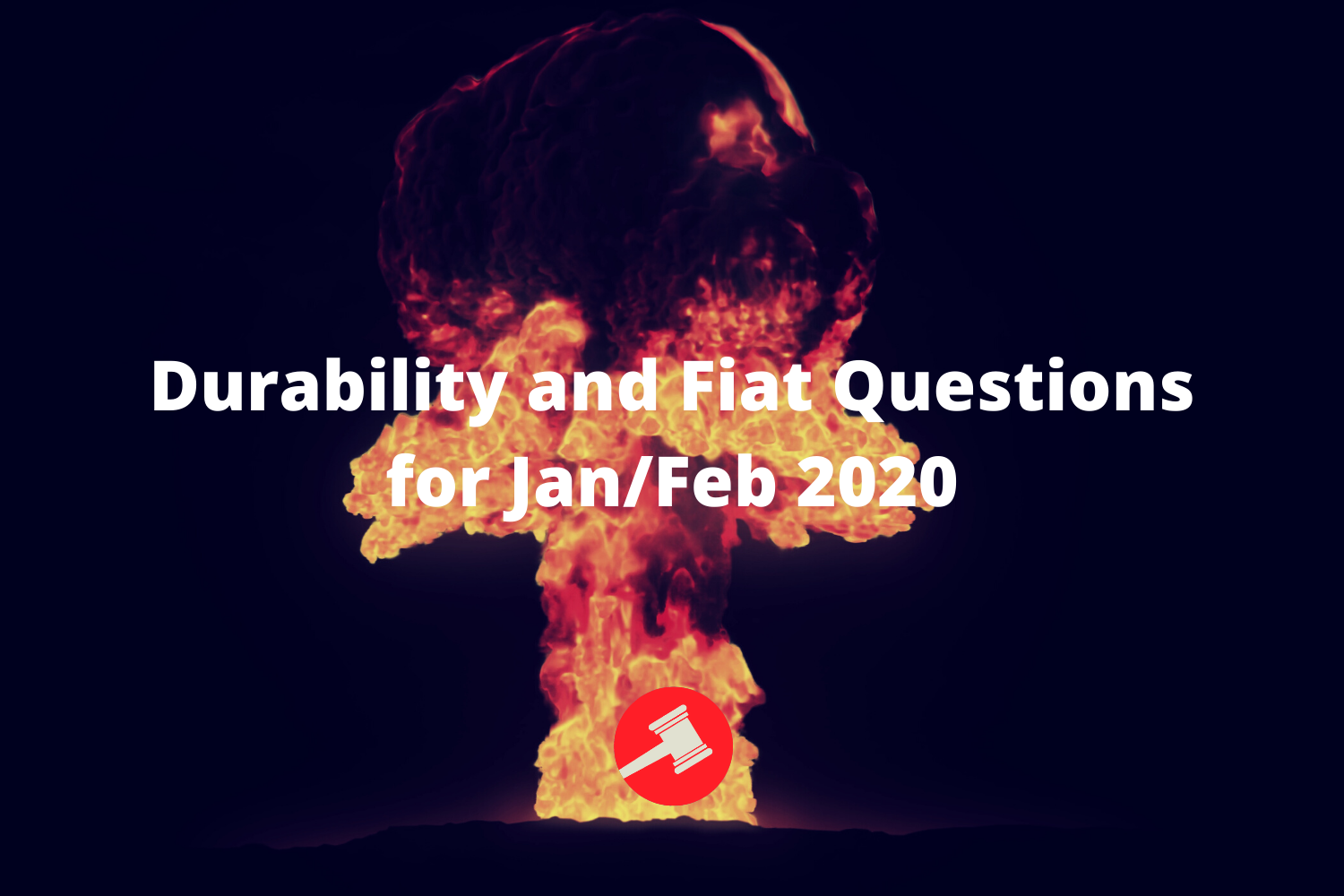Topicality and Plans in LD: A Reply to Nebel by Bob Overing

The Meta is a new series for PDT where we’ll hear from leading minds in LD theory on recent argument trends, controversies and misunderstandings. The primary authors will be Bob Overing and John Scoggin. We encourage discussion, questions, and suggestions for future posts.
Introduction
Last week, Nebel argued that topicality is not a voting issue in LD. I offer three reasons to reject his view. First, we might think T as a voter is fairer. Second, the view relies on hard but unjustified distinctions between plan/non-plan and value/policy that do not hold. Third, Nebel maintains a peculiar definition of topicality that has little basis in modern debate theory.
Fairness
In this section, I’ll demonstrate that Nebel’s justifications for T as a voter in plan debate extend to non-plan debate and provide some additional reasons based on fairness to vote on topicality. Let’s look at Nebel’s defense of why T is a voting issue when the aff reads a plan:
But if the plan is not topical, then why should the neg have to show that the plan is a bad idea? It is not fair to expect the neg to argue against just anything. Nor is it fair to allow the aff to start the debate over, by presenting a plan that does affirm the resolution. So the aff should lose (“T in Policy,” para. 7)
There are two relevant arguments here: 1) it’s unfair to require the neg to argue against non-topical positions and 2) it’s unfair to allow the aff to recover by reading a new topical position. Both can be extended to debates without plans.
First, Nebel’s view inappropriately advantages the aff when the neg reads T because the aff can choose to argue for its original interpretation or to accept the neg’s. The neg now needs to develop a strategy in two different, mutually exclusive worlds. This is significant because a) to properly hedge, the neg should read positions under both interpretations at a huge loss of time and strategic depth and b) the costs of introducing T are higher, which makes it less likely the neg will invest in and win a T argument. Thus, it’s more likely the neg will have to debate against non-topical affs. This may be an empirical question that is difficult to resolve. Regardless, the thrust of Nebel’s first reason to vote on T is that the neg shouldn’t be subjected to a strategic disadvantage by a non-topical aff, yet his view magnifies that disadvantage.
Second, Nebel’s view is not much different than the “let me read a new plan text” argument he claims is unfair. If T is not a voter, the aff can present new grounds for affirming in the 1AR by connecting parts of the aff to the new interpretation. This connection is wholly new. If we reject the aff rebuttal presenting a new plan to connect the aff advantages to the neg’s T interpretation, then we should reject the analogous strategy in LD.
Independent of whether Nebel’s argument fails on its own grounds, we might have other fairness-related reasons to prefer my view. Consider the oft-cited punishment view of fairness in competitive debate. When the aff attempts to “bend the bars of our topical prison to escape by surprise from clash,” the judge’s decision to vote on topicality is “both punishment and a deterrent to others who would commit the same offense” (Hingstman, 1985, p. 845). Disallowing non-topical offense may not be sufficient punishment for a team that attempts to bend the rules in its favor.
Finally, Nebel claims that without a plan, “it’s not as if the debate would need to start over for the neg to meet her burden after winning T. She is closer, not further, from meeting her burden” (“T in LD,” para. 9). This seems to be a fairness claim that the neg is not disadvantaged by a non-topical aff. If we grant it, this argument would also deny that T is a voting issue in plan debates. On the traditional policy model, the plan needs to meet various stock issues, one of which is topicality. Hence, the neg’s winning topicality moves it “closer” to meeting its burden, yet this is not a reason that T is not a voting issue.
If successful, these fairness arguments are sufficient reasons for topicality as a voter. That said, there are more macro-level reasons Nebel’s view is mistaken.
The Plan/Non-Plan Distinction and Quasi-Policy Topics
Nebel neglects to define a plan but hints at some of its features, such as its function to shift the debate onto itself rather than the resolution. The plan is a specific policy, but is it the plan’s “policy-ness” that shifts our focus? Put another way, why should a specific policy as opposed to a specific value case shift debate from the resolution to the case? Nebel makes a paradigmatic assumption that the neg has a burden to disprove the resolution, not the aff case, simply because there’s no policy. On my view, the aff takes certain interpretive stances. These are specific assumptions or definitions of the words in the resolution that define the scope of the aff case even if there’s no explicit plan. The neg must attack the aff within its parameters, not the resolution. Just as disadvantages to Chile don’t apply to a plan about the United States, arguments about pipe organs don’t apply to an aff that assumes organs are human vital organs.
And if the aff case is the focus but the case is not topical, the judge should vote neg per Nebel’s argument (“T in Policy,” para. 8). Now all we need to do is motivate the notion that the neg must disprove the specific aff case, even without a plan.
A) To encourage clarity and clash.
If the aff is tied to a specific interpretation of the resolution, there is a clear understanding among the debaters and judge(s) about the subject of debate. On Nebel’s view, definitions may change frequently within a debate, which decreases consistency and depth along single lines of attack,
B) To prevent “squirreliness.”
If the aff can jettison its interpretations at any time, there is an incentive to use many and even conflicting definitions to alter the neg’s strategic decisions and then construct a coherent story for an aff ballot in the 2AR. Also, topicality’s significance is decreased because it simply modifies how resolutional debate proceeds; that may cause buried or hidden topicality arguments in the line-by-line if the perceived investment needed to win T is lessened.
C) To prevent counterwarrants.
While Nebel maintains other paradigmatic tenets that might avoid this objection, focus on the resolution (rather than aff case) as point of stasis more readily lends itself to counterwarrant strategies where the negative forwards examples to negate the resolution, not the specific affirmative case. Counterwarrants avoid clash on the aff case and may give the neg a significant advantage (Simon, 1984, p. 50-52).
D) The plan/non-plan distinction is fuzzy.
At what point is the aff so specific that it’s a plan? It seems arbitrary to draw a line at a certain level of specificity, and that determination is so far from clear that we shouldn’t stake entire debates on it.
E) LD topics are generally quasi-policy propositions, not propositions of value.
According to argumentation theorists Freeley and Steinberg (2009), a proposition of value is “a type of value claim” such as “Resolved: That abortion is immoral” or “Resolved: That Washington was a greater president than Lincoln.” (p. 56-57). A proposition of policy is “a type of advocate claim” such as “Resolved: That the proposed tax bill should be enacted” (p. 57). Finally, quasi-policy propositions “express a value judgment about a policy” such as “Resolved: That a unilateral freeze by the United States on the production and development of nuclear weapons would be desirable.” (p. 56). “Quasi-policy” best describes LD topics such as “Resolved: The United States ought to prioritize the pursuit of national security objectives above the digital privacy of its citizens” or “Resolved: A just society ought to presume consent for organ procurement from the deceased.” I believe that at least the past eight LD topics describe or imply policy action and call for evaluation with terms like “ought,” “should,” and “just.” At the very least, we have good reason to follow Matlon (1988) in complicating a strict value/policy dichotomy (p. 5). Nebel ports Ulrich (1984) to LD in a move that seems inappropriate if LD is not quite value debate.
So why does it matter for topicality? A strong interpretation is that LD resolutions allow for plans as in policy and simply change the nature of evaluation. If plans are best for policy debate, and LD resolutions are quasi-policy, then plans combined with some aspects of value debate may be best for LD debate. Sherwood (1994) elaborates, “If an affirmative can reasonably prove that the resolution being discussed is a policy resolution, a quasi-policy resolution, or a value resolution with obviously policy implications, they should be allowed the choice of presenting a plan” (p. 16). To a lesser degree, Freeley and Steinberg (2009) state that plans are implicit in quasi-policy propositions (p. 56). As such, the aff may not need to defend a specific policy, but the debate should be focused on the defined or assumed focus of the aff case, not the resolution.
A weaker interpretation is to allow for non-plan affs but still port stock issue requirements from policy debate. Matlon (1988) cites six different debate coaches and theorists who argue that debaters should debate quasi-policy resolutions through stock issues or comparative benefits analysis (p. 5). The latter would be undesirable in LD, but stock issues seems workable and useful for policy-evaluation. And with stock issues, we get a clear topicality burden for the aff case.
Plans on Quasi-Policy Topics
As Nebel has pointed out, it’s hard to come up with many plans that affirm LD topics on his view of topicality that “whether a plan is topical is whether its being a good idea entails the resolution” (“T in Policy,” para. 10). However, we have good reasons to reject that view of topicality as too stringent. Nebel finds this definition from Lichtman, Rohrer, and Corsi (1979) and leans on it heavily:
[T1] affirmative teams are required to formulate proposals whose affirmation logically entails affirmation of the resolution (p. 375)
The fact that Nebel bolds this definition does not grant it authority. It is not, in fact, the “only uniform test” (“T in Policy,” para. 10). It’s also unclear that Lichtman et al. have a strong intent to define, given that their article is not about topicality whatsoever. They do not discuss various alternative definitions. Why should we hold their idea of T above any of the following definitions?
[T2] The plan and case ought to justify the conclusion the resolution asks to be drawn (Allen & Burrell, 1985, p. 857)
[T3] The plan and case must provide evidence in favor of the resolution
[T4] The plan and case must be an example or instance of the resolution
[T5] The plan and case must fall within the bounds of the resolution
[T6] All plan provisions must bear a rational relationship to a topical scheme of action
(Unger, 1979 cited in Hingstman, 1985, p. 850)
Nebel omits the plethora of alternative views on topicality he is no doubt aware of. In particular, definitions like T4 and T5 that stress the “bounds” of the topic are common in debate theory (Dolley, 1984; Hingstman, 1985; Parson, 1987; Bauschard, 2009). On these views, the plan must only be an example or a subset of the topic, a smaller burden than defending the resolution as a whole.
Without defending any particular definition of topicality, we can say that Nebel’s T1 is mistaken. It seems to be extremely difficult to meet with any plan, even on policy topics. For instance, consider the 1993-94 NDT topic, “Resolved: That the Commander-in-Chief power of the President of the United States should be substantially curtailed.” A specific plan to substantially curtail the Commander-in-Chief power in a very specific way may not entail the truth of this proposition generally. For instance, it may be that the power to deploy armed forces should be curtailed, but every other Commander-in-Chief should be augmented! One might bite the bullet on examples such as these, but that would render many plans consistently deemed topical in NDT and NDT-CEDA debate non-topical, narrowing the potential breadth of these topics and stifling creativity. Many such plans, especially on resolutions that are not disjunctions, are and should be allowed. Reasons A) through E) above are additional justifications for this loosening of topicality from T1 to T2-T6 to allow more policy debate on quasi-policy topics.
Additionally, on my view, the aff could use specific examples while avoiding the induction/generalizability problem. As Allen and Burrell (1985) explain, on definitions like T1 and T2, the aff can only win on a plan if its proposal generalizes to the resolution as a whole (p. 857-59). Importantly, this means that even on Nebel’s view, the aff gets to read a plan. However, this produces bad debates by requiring a generalizability contention in the aff case. Debaters either a) race to find the most representative example for their side of the topic and debate out the comparative “generalizability” of these examples, or b) eschew example-finding altogether in favor of a whose-large-metastudy-is-better debate, neither of which seem particularly productive. Simon (1984) also points out that these debates may be difficult to judge due to a lack of standard for clear example comparison (p. 50-51). In-depth plan debates seem less repetitive, more informative, and more lenient on the aff. Modifiers in the topic such as a plural actor or words like “substantial” or “prioritize” as well as stock issues constrain potential plans avoid minute, unpredictable plans. Goodnight, Balthrop and Parson (1974) defend something similar, recognizing that many plans may not “ontologically encompass the resolution for all times” but may be overwhelmingly valuable for competitive debate (cited in Dolley, 1984).
Conclusion
If Nebel believes that plans “are rarely going to be topical on LD resolutions,” then perhaps he should change his view of topicality (“Conclusion: Two Notions of T,” para. 2). He claims that accepting plans in LD would require much “interpretive violence” (“T in LD,” para. 3). I have shown that the opposite is true: disallowing plans takes much more twisting of the facts when we take Nebel’s view to bat with debate and argumentation theory.
Debate evolves. Even something as fundamental as our approach to the topic is subject to change. From the 1930s to mid-1960s, policy teams defended the whole resolution because it was often a specific proposal such as an individual bill. In the 60s, after flirtation with the “goals-criterion,” teams began debating specific plans as topics became broader and less generally defensible. Soon after, policy systems analysis was adopted as debaters gained new tools to test the “comparative advantage” of the plan. Kritiks complicated the matter, and in the last decade, we have seen major changes in how teams approach the topic.
LD is no different. We are seeing more and more plan and consequentialist-style debate in LD, I believe, as a result of more disclosure across debate formats and more accessible research online. Despite what Nebel may think, these strategies are winning and here to stay. At a certain point, we have to let go of 1980s LD.
References
Allen, M. & Burrell, N. (1985). A paradigmatic theory of topicality, Conference Proceedings – National Communication Association, 854.
Bauschard, S. (2009). Debating topicality, Rostrum, Retrieved from http://www.nflonline.org/Rostrum/PolicyDebate?action=upload&upname=0209_027_029.pdf
Dolley, S.D. (1984). Topicality: Is it reasonable to be reasonable???? Waging War on Poverty, Retrieved from groups.wfu.edu/debate/MiscSites/DRGArticles/Dolley1984Poverty.htm
Freeley, A. & Steinberg, D. (2009). Argumentation and debate, Retrieved from http://staff.uny.ac.id/sites/default/files/pendidikan/Rachmat%20Nurcahyo,%20SS,%20M.A./__Argumentation_and_Debate__Critical_Thinking_for_Reasoned_Decision_Making.pdf
Hingstman, D. (1985). Topicality and the division of ground: Framing policy dialectic, Conference Proceedings – National Communication Association, 841.
Lichtman, A.J. & Rohrer, D.M. (1979). Policy systems analysis in debate, Advanced Debate: Readings in Theory, Practice, and Teaching, 375-390.
Matlon, R.J. (1988). Debating propositions of value: an idea revisited, CEDA Yearbook, 9, 1-14.
Nebel, J. (2014). Should T be a voting issue? Retrieved from http://vbriefly.com/2014/11/30/should-t-be-a-voting-issue/
Parson, D.W. (1981). On ‘being reasonable’: The last refuge of scoundrels, Conference Proceedings – National Communication Association, 532.
Simon, R. (1984). The case against counter-warrants in value debate, CEDA Yearbook, 5, 48-53.
Sherwood, K. (1994). Claim without warrant: The lack of logical support for parametric topicality, CEDA Yearbook, 15, 10-19.
Ulrich, W.A. (1984). The nature of the topic in value debate, Contemporary Argumentation & Debate, 5, 1-6.
.

.
.
Bob co-directs Premier Debate, coaches for his alma mater Loyola High School and debates on the NDT/CEDA circuit for the USC Trojan Debate Squad. His students earned 32 TOC bids in his first two years coaching. As a competitor, Bob earned 11 TOC bids in one season and was a TOC finalist.



3 Comments
I can’t find the article from Nebel, gives me a 404 error. Where is it?
vbriefly.com/2014/11/30/should-t-be-a-voting-issue/
[…] Overing has provided a helpful list of such alternative rules, which I will call Bobicality to distinguish them from topicality as I […]